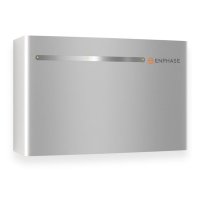
It seems like a small amount of confusion exists about photovoltaic systems utilizing battery backup features. What’s the confusion? DC and AC-coupled systems are many times referred to as the same system. Maybe this is due to the gaining popularity of battery backup systems, or maybe because AC coupled systems are becoming more and more mainstream. Maybe a combination of the two. In any case, a short comparison of each system is presented below.
The term coupling refers to point a point of connection. The majority of PV systems consist of two distinct electrical systems, DC and AC. When these systems employ battery backup function, there are two points of connection that can be made with the output of the solar array. The array can be connected to the DC side of the electrical system or to the AC side. In either case a piece of equipment is needed to manage the PV array so as to extract the most energy from the array via maximum power point tracking (MPPT) as well as provide an efficient output of the harvested solar energy.
As the term implies, DC-coupled systems are connected to the DC side of the PV system. In these systems a charge controller manages the harvest potential of the array via MPPT as well as the output of the harvested solar energy. The output of the charge controller is connected to the system’s battery bank where energy is stored for backup or offgrid use. The battery bank is connected to a battery-based inverter which is responsible for inverting the DC current to AC current that can be consumed by AC loads on site. When the utility goes offline harvested solar energy first flows to the battery bank through the charge controller and then to AC loads via the battery-based inverter. It is of importance to note that the battery-based inverter in this application is responsible for disconnecting the local electrical system from the utility. The flow of harvested solar energy in a DC-coupled system with reference to the PV array is then:
PV Array --> Charge Controller --> Battery Bank <--> Battery-Based Inverter <--> AC Loads <--> Utility

In AC-coupled systems the point of connection is on the AC side. In this type of system the grid-tied inverter is responsible for managing the harvest potential of the array via MPPT as well as the output of the harvested solar energy (please note: some systems employ DC optimizers that are responsible for MPPT). The output of the grid-tied inverter is connected to the site’s AC loads. In most cases the site’s AC loads are separated into regular AC loads and critical AC loads. The critical AC loads are those that will be powered when utility power is lost. The backup portion of an AC-coupled system comes from the battery bank and a battery-based inverter that takes over for the grid during grid loss. When the utility goes offline, harvested solar energy first flows to critical AC loads via the grid-tied inverter and then to the battery bank via the battery-based inverter.
It is of importance to note that the battery-based inverter in this application is responsible for two tasks. First, when the grid goes down, the battery-based inverter disconnects the site’s electrical system from the utility. Second, the battery-based inverter takes over for the utility by providing the grid-tie inverter with an AC waveform to sync with. Without this second function, the grid-tie inverter would not work and AC-coupling would not be possible. The flow of harvested solar energy in an AC-coupled system with reference to the PV array is then:
PV array --> Grid-Tied Inverter --> AC Loads <--> Battery-Based Inverter <--> Battery Bank

In summary, harvested solar energy has two distinct flow paths in DC and AC-coupled systems. In DC-coupled systems, the harvested solar energy first flows to a battery bank via a charge controller and then to AC loads via a battery based inverter. In AC-coupled systems, harvested solar energy first flows to AC loads via a grid-tied inverter and then to a battery bank via a battery-based inverter. Further, DC-coupled systems, as the name implies are connected on the DC electrical system whereas AC-coupled systems are connected on the AC electrical system.

